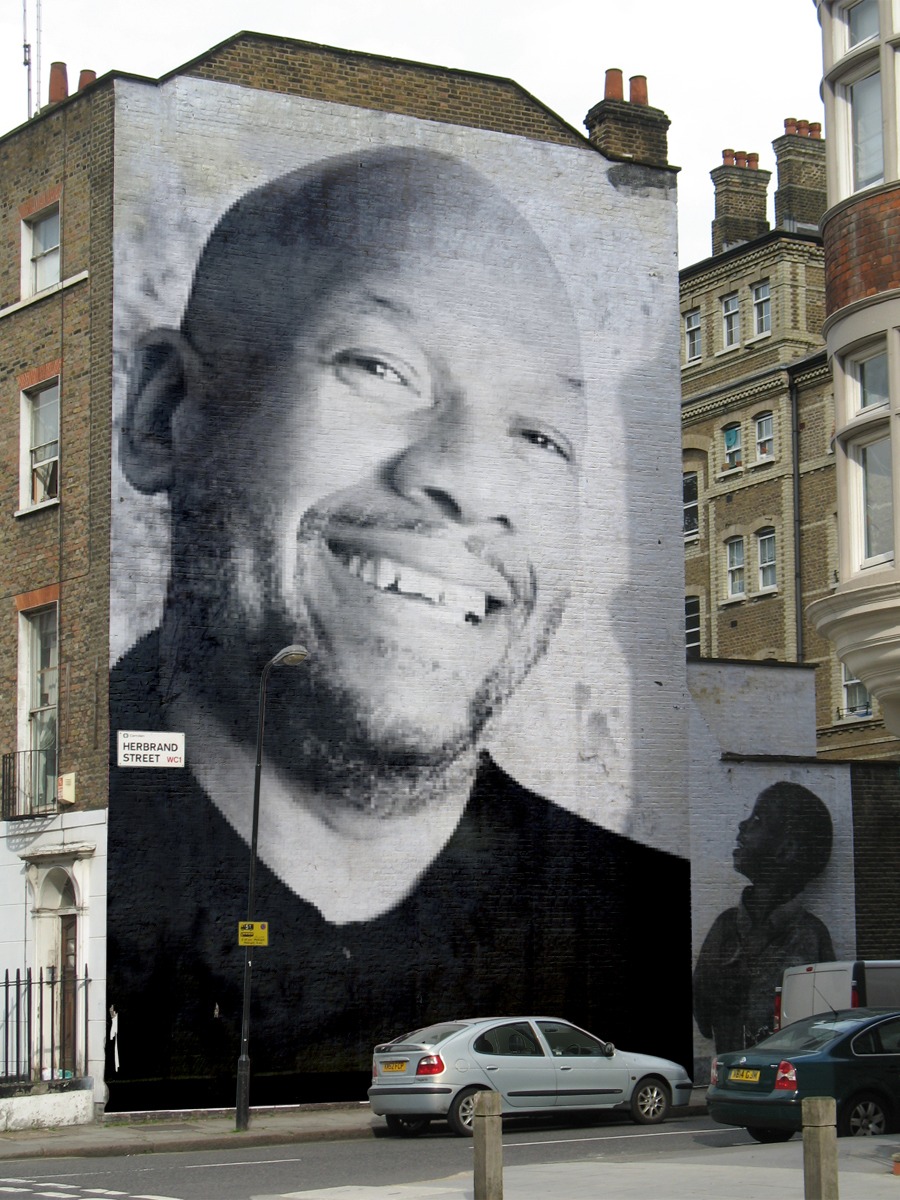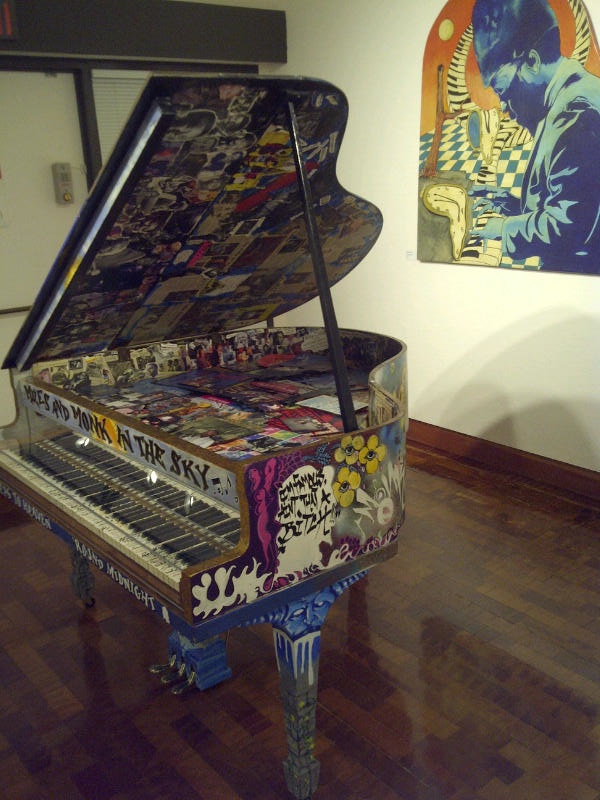The deeply organic, folkloric, and humanitarian expressions of the a cappella ensemble known as Sweet Honey in the Rock has made the ensemble an institution. Sweet Honey in the ROck was founded in 1973 by the distinguished freedom fighter Dr. Bernice Johnson Reagon. Dr. Reagon retired from the group several years ago and they continue to soldier on in their rich tradition. Throughout the ensemble’s history Dr. Ysaye Maria Barnwell has always been an imposing presence, her burgundy voice most often occupying the bottom register of their characteristic harmonic pallet. Though not a jazz ensemble, their level of interplay and soloist support reflects that of the best small ensemble jazz tradition. Their latest recording, titled A Tribute (Appleseed Recordings), pays homage to Odetta (whose ancestral presence is best represented by Ms. Barnwell in the ensemble), Miriam Makeba, Nina Simone, and Abbey Lincoln. A bonus with this release is Ms. Barnwell’s renewed violin playing. We caught up with the multi-tasking Ms. Barnwell recently for some questions, about this latest Sweet Honey in the Rock release as well as her plans now that she too has retired from the ensemble that has brought so much definition and distinction to her career.
Clearly for you the latest Sweet Honey in the Rock release is special; but other than the fact that it marks your recorded transition from active performance with the group, why do you feel this new release is special?
This is the first recording in which we pay tribute to women musicians who have influenced each of us on a deep personal, artistic and political level. Personally, I feel I was politicized by ODETTA, Nina Simone, Abbey Lincoln and Miriam Makeba and was inspired by all of them. In 1963 I entered the State University College of NY at Geneseo, and there were 7 Black people on the campus (faculty, students and staff) and there were no books by Black authors or about Black people in the library. This was shocking coming from NYC. These women literally provided the sound track which helped me define who I was in that environment, helped me to understand my issues in a much larger context and gave me a vocal repertoire with which to express myself.
Your new release A Tribute, recorded live at Jazz at Lincoln Center (Appleseed Recordings) has been characterized as perhaps having a stronger relationship to jazz than previous Sweet Honey releases; please talk about that aspect.
For me one of the strongest elements of jazz in the evolution of African American music was the introduction of instrumentation. Sweet Honey In The Rock (SHIR) is principally an a cappella group and while there are elements of Jazz improvisation in our vocals and while we have a few jazz inspired tunes in our repertoire and in our own compositions, it is the addition of the jazz trio (piano, bass and drums) [on A Tribute] that tips the balance for us and allows us to explore new territory as vocalists.

How have you gone about developing your distinctive role as the “bottom” of the Sweet Honey sound?
I think that I am the only member of SHIR who did not identify as a singer when I came into the group. I had studied violin for 15 years, majored in music in High School, and had sung in choirs in Junior High School and College. I learned to play guitar while in College and sang folk songs in the manner of ODETTA, Richie Havens, etc. but earned both a Bachelors and Masters in Speech Pathology. I gradually completed these studies in 1968 and came to DC to teach at Howard University. I left the faculty for 2 years to earn a PhD and returned. Being a musician was never on the radar although music was a vital part of my life. So when I was invited to audition and then join SHIR, I had no preconceived notions about my voice; no actual repertoire or genre that I was attached to. I had learned from ODETTA and Nina that women could utilize the low register at will and so when asked to harmonize it was no problem to “go there” since that territory was available. Through the years my vocal range has expanded in both directions and I have had the opportunity to use my full range in the group.
What would you say have been some of the high points of your tenure in Sweet Honey?
There have been many. Here re a few.
-I don’t remember the year but one year on my birthday (2/28) SHIR performed a concert on the stage of Central High School in Little Rock AK with Daisey Bates sitting on the first row in an integrated audience.
– When Nelson Mandela was released from prison and toured the US, SHIR sang at the rallies in NYC, DC and CA. SHIR had been singing about apartheid in South Africa for years and Bernice and I had both been arrested for demonstrating and being messengers at the South African Embassy.
– SHIR was the first concert at the Obama White House during his first administration. He and family members including his mother and sister in Hawaii have seen us perform in various locations before any of us actually met.
– I gave up the violin when I went to college and not majoring in music and continuing with this instrument severely damaged my relationship with my father who had been my only teacher. The first time SHIR performed at Carnegie Hall, I invited my parents and they came. My father was proud and loved the group. Our relationship changed after that.
– Now, after exactly 40 years of not playing the violin, I have begun to play again. My initial feeble attempts can be heard on the Tribute CD recorded 2 years ago at the premiere of this concert. I’m getting better now, have found a great teacher and when I have time I study and practice consistently, so you never know…
– Being in SHIR has led me to a number of profound opportunities which I have grown from and which I will now continue to pursue with greater intensity and devotion; composing, conducting my Building a Vocal Community Workshops and leading Community Sings, and being open to new collaborative projects several of which have brought music and my background in Public Health into wonderful alignment.
Now that you’ve announced your intention to retire from Sweet Honey, what opportunities or projects are you looking at on the horizon?

– I have just trademarked THE FORTUNE’S BONES PROJECT and hope that it will have greater visibility in the future.
I want to create several more children’s books based on my songs.
I want to expand my teaching opportunities.
I’d love to do some recording projects.
I’d love to collaborate with other artists.
Contact: www.ymbarnwell.com












